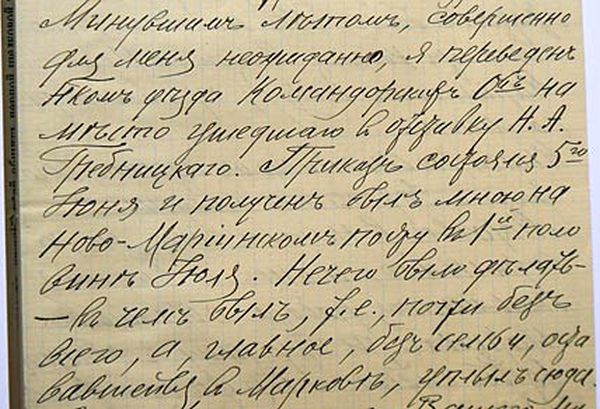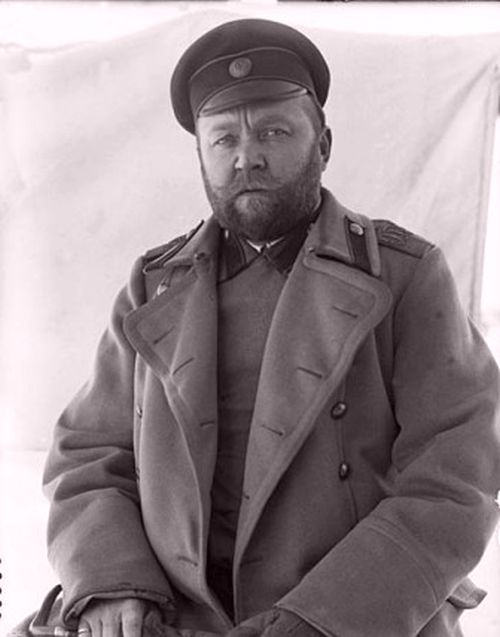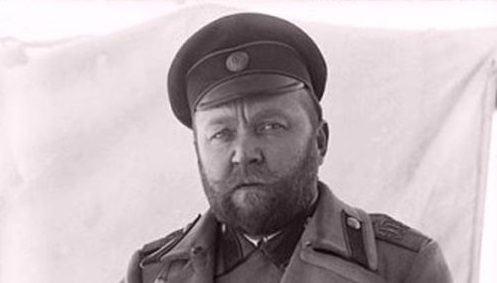November 18 marks the 160th anniversary of birth of Nikolai Sokolnikov, who served as head of the Commander Islands in 1907-1917. Sokolnikov is known as a collector of zoological and ethnographic collections in Chukotka, Kamchatka and the islands of Bering and Medny. Natalya Tatarenkova, Head of Historical and Cultural Heritage Department of the Commander Islands Nature and Biopshere Reserve, spoke about the contribution of the former manager to the development and study of the Commander Islands.
Sokolnikov was born into a family of hereditary nobles in the Oryol province. After graduating from 6 classes of the Kholmsk classical gymnasium in 1878, Nikolai Pavlovich entered the service in the 40th Kolyvan Infantry Regiment. Immediately after enrollment, he was sent to undergo training at the Warsaw Infantry Junker School. Having passed the way from ensign to commander of a non-combatant company, in the summer of 1895, Nikolai Sokolnikov came to the Far East. First he served in the 9th East Siberian Rifle Battalion (stationed in the village of Nikolskoye, present-day Ussuriysk), and in July 1897 he was sent to Chukotka to temporarily fulfill the duties of the head of the Anadyr district. Then he filed a petition for dismissal from military service. A month later, Sokolnikov received the civil rank of collegiate assessor, and six months later he was approved as the head of the district.
Thus began a fundamentally new stage in his life. Nikolai Pavlovich fell in love with Chukotka. He worked not only as an administrator, but also as a researcher. The zoological, archaeological and ethnographic collections he has collected are truly priceless. Family life also took shape: Nikolai married Evdokia Belyaeva, a petty bourgeois woman of the village of Markovo (Chuvan), in 1904 their firstborn was born.
Life went on as usual, until in June 1907 the governor of the Commander Islands, Nikolai Aleksandrovich Grebnitsky, resigned. There was a need to urgently look for a replacement. Sokolnikov's candidacy caused a lot of controversy. An official with a military education was rightly recognized as completely unprepared "for the activity of an agent for the protection of fur seals, which requires special knowledge in the field of applied zoology." The Amur Governor-General Pavel Fridrikhovich Unterberger insisted on the choice. Proceeding from the considerations that supervision of the Commander's fur trades can be carried out by a person "with a general education, subject to the actual stay on the spot and a conscientious attitude to his official duties", and knowing Sokolnikov as an experienced and responsible executive, the military governor considered him quite suitable for appointment to the post of manager of the Komandorsky uyezd(by that time the district was renamed to uyezd).
The news came as a complete surprise to Sokolnikov. The order of June 5/18 found him at the Novo-Mariinsky post (present-day Anadyr). “There was nothing to do,” he recalled, “in what he was, that is, almost without everything, and, most importantly, without a family that remained in Markov, he sailed here [to Bering Island]". The first winter was the hardest.

Letter from Nikolai Sokolnikov, in which he tells about his departure to Bering Island. Photo: from the collection of the American Museum of Natural History
Nikolai Pavlovich ruled the Commander Islands from 1907 to 1917 and was awarded the Order of St. Vladimir 4th degree. As required, he was on the entrusted territory almost inseparably, but this did not save the islands from ruin. A difficult, hopeless time began for the Aleuts. The crisis worsened until 1923. It got to the point that the question arose about the physical extinction of a small nation.
Sokolnikov served honestly. He strengthened the coast guard, insisted that gunners from the gunboat Manchzhur train the Aleut guards in how to fire cannons, and insisted on the installation of a "wireless telegraph station" in the village of Nikolskoye. But these measures were not enough. In 1910, he himself reported that the protection of fisheries "cannot be considered satisfactory," and without changing the existing laws, "the disappearance of [sea otters and fur seals] from the Commander Islands is a matter of a very near future." But he did not seek to understand "international issues". Instead, the manager proposed lifting unilateral restrictions on fishing outside territorial waters (a 3-mile zone along the Russian coast) and, in fact, killing off the animals on the water themselves, until competing countries did so.
Yes, Sokolnikov was far from questions of zoology and rational nature management. He kept the field documentation sparsely, and disagreements with the Department of Land Management and Agriculture reached the point that the latter stopped relying on his reports and began to send their specialists. As a result of the conflict in 1915 on the island of Medny a separate trade department, independent of the district chief, was organized. But Nikolai Pavlovich understood that it was necessary to carry out research work. He advocated the study of hydrology and fauna of the island shelf during the periods of seasonal patrols of the Commander waters by guard ships.
Sokolnikov retains one remarkable feature. No matter how difficult it was, he did not abandon his old hobby - collecting ethnographic and zoological material. In 1910, already serving on the Commanders, he sent as a gift to the Ethnographic Department of the Russian Museum "a huge and valuable collection from the Anadyr region, characterizing the life of the Chukchi, Lamuts, Koryaks and Russian settlers of our Far Eastern Region." Later, on the basis of the department, the Russian Ethnographic Museum (REM) was formed. In addition to the Chukchi collection, his funds keep a small collection of the Commander Islands in 1914. Not all items have survived to this day, but beaver nets, floats, an'ageh jerk tool, a fish-shaped sinker and, most importantly, an accompanying sheet with slightly distorted but recognizable Aleutian names have survived.
Zoological collections were much more extensive. Stuffed birds caught on Bering Island (including a rare Steller's sea eagle in 1909) are kept in the Darwin Museum and the Zoological Museum of Moscow State University. A large collection of birds, more than 860 specimens of 152 species (among which there were several sternums of the extinct spectacled / Steller's cormorant) was acquired by the Rothschild Zoological Museum in St. Tring (the UK). This collection was originally intended for the Petrograd Museum, but transportation problems arose. Then Sokolnikov offered it to the British Museum, but he did not accept it because of the deteriorating preservation, as a result of which Rothschild bought it.
In 1916, the lease term for fur trades by the Vladivostok Trading House "Churin and Co." ended, and the islands were transferred to the treasury. On October 28, Sokolnikov signed the last of the surviving documents - "A Brief Review of the Economic Situation of Indigenous People in the Kamchatka Region and Methods of Its Ordering", addressed to the Amur Governor-General. How the fate of the manager developed in the future is not known for certain. The Swedish naturalist Sten Bergman claimed that he was stripped of his post by the "Bolsheviks", but this is not entirely true. The first elections for an administrative position were held on the Commander Islands in July 1917. There were two candidates: Sokolnikov and Gromov. Innokenty Gromov, a former assistant to the head of the police department, a former theological seminary graduate, teacher of the Mednovsky parish school, was elected the district commissar.

Nikolay Sokolnikov - Collegiate Counselor, Knight of the Orders of St. Stanislaus, 2nd and 3rd degrees, St. Anna, 2nd and 3rd degrees. Photo: from the collection of the American Museum of Natural History
Nikolai Pavlovich left for Vladivostok (perhaps during the events of 1917 he was already there). According to the Swedish naturalist Sten Bergman, the winter of 1920-1921. the former district chief spent in Ust-Kamchatsk (apparently without a family). During these years, fish processing and canning factories of the Dembi family, which have close ties and real estate in Japan, worked in the village. Probably, Sokolnikov's activity was somehow connected with them. This assumption is supported by rumors that he emigrated to Japan. The list of our compatriots who died and went missing during the devastating earthquake that occurred on September 1, 1923 in the Kanto area includes the name: "Nikolai Pavlovich Sokolnikov". This is hardly a coincidence. The earthquake was of such force that a number of cities, including Tokyo and Yokagama, were completely destroyed, and the tsunami wave reached the shores of Kamchatka. What happened to his wife and son Vladimir is unknown.
The full version of the article was published in the 4th issue of the regional newspaper "Aboriginal Kamchatka" (November 2020)










